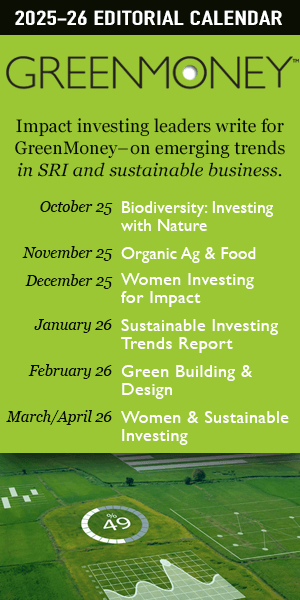>> Back to September 2024 Issue
 Above: Prologis, Venlo Distribution Center, Europe
Above: Prologis, Venlo Distribution Center, Europe
Over the past several decades, the energy system has steadily evolved to include more renewable energy sources. The energy supply is mostly fossil fuels and renewables. The fossil fuels are coal, methane, natural gas, and oil. Renewables are solar, wind, hydro, and biofuels. The biggest users of energy are transport, industry and buildings. Buildings alone consume 40% of the world’s energy.
In our modern developed economies, we tend to think of the energy sector characterized by mostly oil and gas. But the energy supply looked much different in the late 1800s through the mid-1900s, where coal was the primary input into the energy system.
It has only been in the last 50 years that energy supply has become diversified across types of energy including oil, natural gas and nuclear. Depression-era domestic economic policies financed the construction of dams and reservoirs for an uptick in hydropower. US geo-politics in the 1970s created the impetus to explore renewable energy sources with domestic solar and wind farms. And the fracking boom in the US has made natural gas one of the country’s largest sources of energy.
The International Energy Agency (IEA) advocates energy policies to improve reliability and affordability. In 2023, the IEA recorded that global investments into renewable energy projects reached $1.74 billion, surpassing the $1.05 billion of investments into fossil fuel projects.
Source: IEA (2023), Global energy investment in clean energy and in fossil fuels, 2015-2023, IEA, Paris https://www.iea.org/data-and-statistics/charts/global-energy-investment-in-clean-energy-and-in-fossil-fuels-2015-2023 , License: CC BY 4.0
Following a similar pattern of the global energy investment profile, by the end of 2024, the US Energy Information Administration counts planned projects to increase US electricity generation in mostly solar and battery storage.
Real Estate Owners Make Use of Renewable Energy Sources in Various Ways
The most visible is solar which can be on-site at the building or through the utility provider. Industrial buildings with large expansive rooftops and just a few tenants with moderate energy needs can make use of on-site solar. For example, the largest industrial REIT – Prologis1, has deployed 500 megawatts of capacity through rooftop solar. This amount is enough to power 49,000 homes. Tenants see benefits through reduced utility bills. Energy that is not used by tenants feeds back into the local grid. Another industrial REIT – Rexford2, with a portfolio concentrated in Southern California, has increased its solar generation to 17 megawatts, nearly doubling its previous capacity of 9 megawatts. By adopting energy efficiency measures and procuring renewable energy Rexford has seen a 10.6% reduction in energy consumption from its properties between 2022 and 2023. In 2023, the company reported $300,000 of net operating income generated from solar.
Purchase power agreements (PPA) provide buildings access to renewable energy that is not local. Sometimes these are called virtual purchase power agreements because of the distance between energy generation and the end-user. The PPA provides new renewable energy supply into the grid and the building owner receives renewable energy credits (RECs) for an agreed price. For example, in 2021 Empire State Realty3 committed to source 100% of the power for its entire Manhattan-based portfolio via wind generation. The Empire State Building, their flagship building, had been run on wind since 2011. Empire extended this program to create more longer-term energy contracts providing them with energy savings at a negotiated price. Procuring renewable energy also helps to attract tenants in competitive markets with corporate clients. Empire State Realty finds that they can differentiate themselves from other landlords by providing a way to access renewable energy.
How Can Buildings Use Renewable Energy in the Future?
According to the Solar Energy Industry Association (SEIA), US solar installations have increased 22% per year on average over the last 10 years. This growth is driven by lower costs for solar installations and US federal policies including solar Investment Tax Credit (ITC) and more recently incentives for renewable energy in the Inflation Reduction Act (IRA). Solar energy is increasingly paired with storage. In the last 5 years, 12% of solar installed was paired with storage; SEIA estimates this will climb to 23% in 2028. Many other types of companies that own buildings benefit from on-site solar. The EPA (Environmental Protection Agency) ranks the top US companies generating on-site energy – among them are Proctor & Gamble and the University of California. The specialty mall REIT – Macerich4 is ranked 25th, producing 4% of its overall energy with on-site solar.
Large scale renewable energy infrastructure is steadily gaining in roads among utilities. This allows building owners to access renewable energy supply through their local utility. Modernizing the grid to include distributive energy supply allows companies like Prologis to put unused energy back into the grid for local use.
Paradoxically, as technology has evolved to improve energy efficiency and reduce energy consumption overall, society is increasing its demand for electricity. Data centers lead this demand – powering our online activities like streaming, gaming, shopping, and telecommuting. The demand is projected to grow significantly alongside the demand for electric vehicles and the ramp up of artificial intelligence.
Going forward, building owners may explore ways to balance new energy demands by reimagining the role of the building in the energy value chain. One concept is to use buildings as energy storage. Currently we see this practiced most often as “demand response” which is when a utility customer voluntary reduces its electricity use, typically during times of peak demand or high outages, to help support the needs of the local grid. This is mostly used by large energy users such as data centers that can adjust their building’s energy needs in real time. For example, on extremely hot days where most Californians are running their air conditioning, Digital Realty5, a data center REIT, coordinates with the local Bay Area utility to reduce or reserve their energy load at specific peak times. The REIT and utility will have an agreement in place that results in energy cost-savings for the building owner that participates in these transactions.
Another emerging concept is vehicle-to-grid energy supply. As more building owners retrofit their properties for electric vehicle charging, vehicles can act as battery storage for the building and for the local utility. At the moment, this idea is more applicable to electric transport parked for extended stretches of time, ideally overnight. For instance, Essex Property Trust6, a residential REIT added 600+ chargers over the last 3 years at 73 of their properties. Building owners can benefit both the tenants’ concern for range anxiety, but also potentially help to reduce overall property energy costs if the vehicle’s energy is fed back to the grid at peak load times.
The energy supply system continues to evolve. Buildings have an interesting role to play not just as end-users but suppliers of energy too through more grid integration scenarios.
Article by Sarah Adams, Chief Sustainability Officer and co-founder at Vert Asset Management. Vert manages the Global Sustainable Real Estate ETF. Sarah leads on engagement at Vert which is three things – dialogue with the companies we invest in, advocacy with regulators and government, and being a model sustainable business. Sarah is passionate about sustainability education for financial services. She is a teacher for the Chartered SRI Counselor (CSRIC), and she sits on the USSIF Education Committee. She has a BA in History from UCLA (US), a MSc in Environment and Sustainable Development from University College London (UK), and a MA in Environmental Law from SOAS (UK).
Footnotes:
1 Prologis is 4.76% of the Vert Global Sustainable Real Estate ETF (VGSR) as of June 30, 2024.
2 Rexford is 1.18% of the Vert Global Sustainable Real Estate ETF (VGSR) as of June 30, 2024.
3 Empire State Realty is 0.15% of the Vert Global Sustainable Real Estate ETF (VGSR) as of June 30, 2024.
4 Macerich is 0.40% of the Vert Global Sustainable Real Estate ETF (VGSR) as of June 30, 2024.
5Digital Realty Trust is 4.83% of the Vert Global Sustainable Real Estate ETF (VGSR) as of June 30, 2024.
6 Essex Property Trust is 1.87% of the Vert Global Sustainable Real Estate ETF (VGSR) as of June 30, 2024.
Disclosures
The Vert Global Sustainable Real Estate ETF holds publicly traded REITs.
Fund holdings and sectors are subject to change at any time and should not be considered a recommendation to buy or sell any security.
Investing involve risk. Principal loss is possible. Investors should be aware of the risks involved with investing in a fund concentrating in REITs and real estate securities, such as declines in the value of real estate and increased susceptibility to adverse economic or regulatory developments. Investments in foreign securities involve political, economic and currency risks, greater volatility and differences in accounting methods. A REIT’s share price may decline because of adverse developments affecting the real estate industry. REITs may be subject to special tax rules and may not qualify for favorable federal tax treatment which could have adverse tax consequences. The Fund’s focus on sustainability may limit the number of investment opportunities available to the fund and at time the fund may underperform funds that are not subject to similar investment considerations.
The Vert Global Sustainable Real Estate Fund\’s investment objectives, risks, charges, and expenses must be considered carefully before investing. The statutory and summary prospectuses contain this and other important information about the investment company and may be obtained by calling 1-844-740-VERT or visiting www.vertfunds.com . Read carefully before investing.
The Vert Global Sustainable Real Estate Fund is distributed by Quasar Distributors, LLC






















